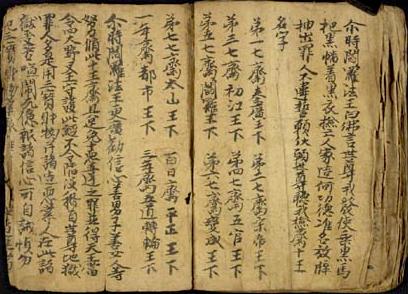
The Dunhuang manuscripts were discovered over a century ago and since then have generated an impressive volume of research. Looking at the corpus today, one of its most astonishing features is the linguistic diversity of the material, manifested in a mixture of languages and scripts. There are texts in over twenty different languages and scripts, including combinations of these. There are examples of Tibetan written with Chinese characters as a way of recording the pronunciation of Tibetan names and titles. Conversely, there are also Chinese sutras written phonetically in the Tibetan script, no doubt so that someone could participate in chanting the scripture without being able to properly read, or perhaps even understand, Chinese. Some Uighur manuscripts have Chinese characters interspersed in the text, which would have been read either in Uighur or using a Sino-Uighur pronunciation. But even in monolingual manuscripts we occasionally find traces of multilingualism, as some of them are written with such poor orthography and grammar that we have to assume that they were either produced by semi-literate people, perhaps children or adults with a manifestly low level of literacy in that particular script.
This project explores multilingualism and multilingual literacy in the Dunhuang region during the 9th-10th centuries, that is, the Guiyijun 歸義軍 (Return to Allegiance Army) period. The aim is to move away from the usual way of looking at Chinese, Tibetan or Uighur manuscripts as being written by Chinese, Tibetan or Uighur people and understand the manuscripts as products of a complex multilingual society in which people were of varied ethnicities and cultural background who were rarely monolingual but spoke a variety of languages, some intermixed with others. Similarly, their textual production was also multilingual and people produced manuscripts not only in their native language. The project ultimately tries to use manuscript evidence to reconstruct the social background in which they were produced.
